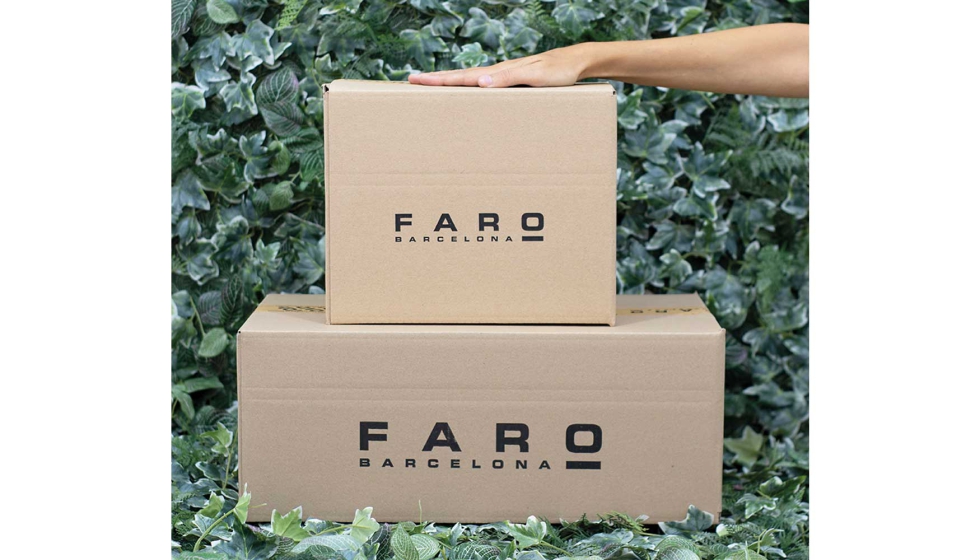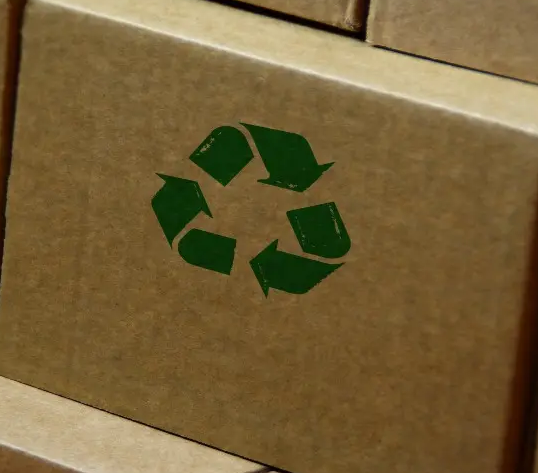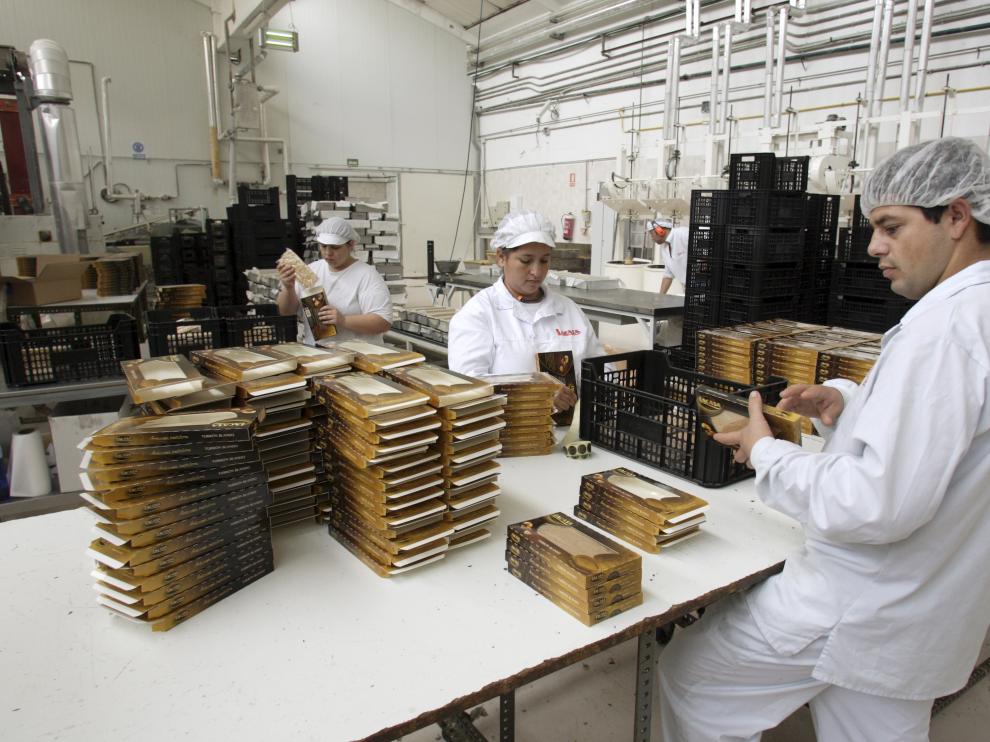What is Secondary Packaging?
2023-05-31
Definition of Secondary Packaging
Secondary packaging refers to the packaging that is used to group or contain multiple primary packages of a product for distribution, storage, and handling. It is typically used to protect the primary packages during transportation and also makes it easier to handle the product as a unit.
Examples of secondary packaging include cardboard boxes, shrink wraps, pallets, and plastic bags. These materials are designed to provide additional protection to the primary packaging and to make it easier to transport and store the product in bulk quantities.
Secondary packaging is important because it helps to reduce damage to the primary packaging and product during transportation and storage, which can result in significant cost savings for manufacturers and distributors. It also helps to streamline the logistics process by making it easier to move large quantities of products efficiently.
What are the Examples of Secondary Packaging?
Secondary packaging is an important part of the overall packaging process for many products. It is used to group or contain multiple primary packages of a product for distribution, storage, and handling. In this blog post, we will explore some examples of secondary packaging.
- Cardboard Boxes: Cardboard boxes are one of the most common types of secondary packaging. They are used to group and protect multiple primary packages of a product during transportation and storage. Cardboard boxes can be customized to fit the size and shape of the primary packages, and they are often printed with branding and labeling information.

- Shrink Wrap: Shrink wrap is another popular type of secondary packaging. It is a plastic film that is wrapped around multiple primary packages of a product and then heated to shrink and conform to the shape of the packages. Shrink wrap provides a secure and tamper-evident seal, as well as protection from dust, dirt, and moisture.

- Pallets: Pallets are platforms made of wood, plastic, or metal that are used to stack and transport multiple primary packages of a product. They are designed to be easily moved by forklifts or pallet jacks and can hold large quantities of products. Pallets can also be shrink-wrapped or covered with a tarp for additional protection during transportation and storage.
- Plastic Bags: Plastic bags are commonly used as secondary packaging for smaller items such as food products, toiletries, and clothing. They can be custom printed with branding and labeling information, and they provide a lightweight and cost-effective way to package and transport products.

- Corrugated Trays: Corrugated trays are used to group and protect multiple primary packages of a product during transportation and storage. They are made of corrugated cardboard and can be customized to fit the size and shape of the primary packages. Corrugated trays are lightweight and easy to handle, making them a popular choice for many industries.
What are the Functions of Secondary Packaging?
Secondary packaging is a vital component of the packaging industry that provides various functions to manufacturers, distributors, and retailers. In this blog, we will discuss the different functions of secondary packaging.
- Protection: The primary function of secondary packaging is to protect the products and their primary packaging from damage during transportation, storage, and handling. Secondary packaging provides an extra layer of protection against physical damage, moisture, and other environmental factors. For example, cardboard boxes, shrink wrap, pallets, plastic bags, and corrugated trays are commonly used for secondary packaging.
- Identification: Secondary packaging also plays a significant role in identifying the product, brand, and other important information like batch number, expiry date, etc. The secondary packaging can be printed with logos, product names, and other necessary details that help in easy identification of the products.
- Convenience: Secondary packaging makes it easier for manufacturers, distributors, and retailers to handle, store, and transport large quantities of products. It simplifies the process of loading and unloading products from trucks, warehouses, and retail stores. Additionally, it saves time and effort while handling multiple units of products.
- Marketing: Secondary packaging can also be used for marketing purposes, such as displaying promotional messages, logos, and product information. It creates brand awareness and increases visibility for the product. Moreover, it helps to communicate the product’s features and benefits to the customers.
- Sustainability: The last but not least function of secondary packaging is sustainability. With increasing concerns about environmental issues, manufacturers are opting for sustainable secondary packaging options that are made from recyclable materials. It reduces the environmental impact of packaging waste and contributes to sustainable development.
Secondary packaging serves multiple functions that are crucial for the successful distribution and sales of products. Its functions include protecting the products, identifying them, providing convenience, promoting the brand, and contributing to sustainability. Hence, manufacturers must consider all these functions while designing their secondary packaging.
Secondary Packaging vs. Primary Packaging: What are the Differences?
Packaging is an essential aspect of product design and marketing. It plays a vital role in protecting the product, providing information to the consumer, and promoting the brand. However, packaging comes in different forms, each with its own unique purpose and characteristics. Two of the most common types of packaging are primary packaging and secondary packaging.

Primary Packaging
Primary packaging refers to the immediate container that directly holds the product. It is the first layer of packaging that the consumer sees and interacts with when they purchase the product. Primary packaging can take different forms depending on the product and its intended use. Some examples of primary packaging include:
- Bottles – used for liquids such as beverages, cosmetics, and pharmaceuticals.
- Tubes – used for creams, gels, and other semi-liquid products.
- Blister packs – used for tablets and capsules.
- Pouches – used for snacks, pet food, and other small items.
- Jars – used for food, cosmetics, and other products that require a wide opening.
The primary packaging is designed to protect the product from contamination, damage, and spoilage. It must also be easy to open, use, and dispose of. Additionally, it must meet regulatory requirements, such as FDA approval for food and drugs.
Secondary Packaging
Secondary packaging, on the other hand, refers to the outer layer of packaging that holds the primary package. It is not in direct contact with the product but serves to protect it during transportation, storage, and display. Secondary packaging can take many forms, including:
- Cardboard boxes – used for shipping and storing multiple units of a product.
- Shrink wrap – used to bundle multiple products together.
- Paperboard cartons – used for storing and displaying products on store shelves.
- Stretch film – used to wrap pallets of products for shipping.
- Protective foam – used to cushion fragile products during transportation.
The primary purpose of secondary packaging is to protect the product from damage and ensure that it arrives at its destination in good condition. It also provides additional branding opportunities and can be used to display important information, such as ingredients, nutritional value, and usage instructions.
Differences between Primary Packaging and Secondary Packaging
While both primary and secondary packaging serve the purpose of protecting the product, there are some key differences between the two:
- Function – The primary packaging is designed to hold and protect the product during use, while the secondary packaging is designed to hold and protect the primary package during transportation, storage, and display.
- Material – Primary packaging is typically made from materials that are in direct contact with the product, such as glass, plastic, or metal. Secondary packaging is made from materials that are not in direct contact with the product, such as cardboard, paperboard, or shrink wrap.
- Design – Primary packaging is designed to fit the specific shape and size of the product, while secondary packaging is designed to fit multiple units of the product or the primary package.
- Information – Primary packaging is used to provide information about the product, such as branding, product name, and usage instructions. Secondary packaging is used to provide additional information, such as ingredients, nutritional value, and safety warnings.
- Environmental impact – Primary packaging has a greater environmental impact than secondary packaging because it is typically made from non-biodegradable materials that take longer to decompose. Secondary packaging, on the other hand, can be made from recycled materials and is easier to dispose of.

What are Secondary Packaging Machines?
Secondary packaging machines are automated systems that handle the packaging of finished products into containers, cartons, or cases for shipment or retail sale. These machines provide a cost-effective and efficient solution for manufacturers and packagers looking to streamline their packaging process.
We will explore the various types of secondary packaging machines available in the market, their features, benefits, and how they can help your business.
Types of Secondary Packaging Machines
- Cartoning Machines
Cartoning machines are used to package products in cartons or boxes. They are designed to automatically load, fold, and seal cartons with products inside. Cartoning machines come in different types such as vertical cartoners, horizontal cartoners, and end-load cartoners.
Vertical cartoners are ideal for products that require vertical loading, while horizontal cartoners are perfect for products that require horizontal loading. End-load cartoners are used for larger products and are capable of loading multiple items at once.

- Case Packing Machines
Case packing machines are used to pack products in cases or trays. They are designed to automate the loading and sealing of products in cases for transportation or storage. Case packing machines come in different types such as top-load case packers, side-load case packers, and wrap-around case packers.
Top-load case packers are used for products that require top-loading, while side-load case packers are used for products that require side-loading. Wrap-around case packers are used for products that require wrapping around the case before sealing.

- Tray Forming Machines
Tray forming machines are used to form trays for products that require containment during transportation or storage. They are designed to automate the formation of trays from flat sheets of cardboard or plastic. Tray forming machines come in different types such as horizontal tray formers, vertical tray formers, and wrap-around tray formers.
Horizontal tray formers are used for products that require horizontal loading, while vertical tray formers are used for products that require vertical loading. Wrap-around tray formers are used for products that require wrapping around the tray before sealing.
- Palletizing Machines
Palletizing machines are used to stack and organize finished products onto pallets for transportation or storage. They are designed to automate the process of stacking products onto pallets in a predetermined pattern. Palletizing machines come in different types such as robotic palletizers, high-level palletizers, and low-level palletizers.
Robotic palletizers are ideal for products that require flexibility in stacking patterns, while high-level palletizers are ideal for products that require high-speed stacking. Low-level palletizers are ideal for products that require low-speed stacking.
Benefits of Secondary Packaging Machines
- Increased Efficiency
Secondary packaging machines can significantly increase the efficiency of your packaging process. They can handle large volumes of products in a short period, reducing the time and labor required for manual packaging. This allows you to produce more products and meet customer demand faster.
- Cost-Effective
Investing in secondary packaging machines can be cost-effective in the long run. While the initial investment may seem high, the machines can save you money by reducing labor costs, minimizing product waste, and increasing production output. Additionally, they can reduce the risk of product damage during transportation, saving you money on returns and replacements.
- Consistent Quality
Secondary packaging machines can ensure consistent quality in your packaging. They can precisely measure and package products according to predetermined specifications, ensuring that each product is packaged identically. This enhances your brand image and customer satisfaction.
- Flexibility
Secondary packaging machines offer flexibility in terms of packaging design and material. They can handle various shapes, sizes, and materials, allowing you to package a wide range of products. Additionally, they can customize packaging according to customer requirements, enhancing your brand appeal.
Who are the Secondary Packaging Machine Manufacturers?
Secondary packaging machines are becoming increasingly popular in the manufacturing industry, as they help to streamline the packaging process and improve efficiency. There are a number of different manufacturers that produce these machines, each with their own unique strengths and capabilities.
There are a number of other leading manufacturers of secondary packaging machines. These include:
- Bosch Packaging Technology – a German company that produces a wide range of packaging equipment, including cartoning machines, case packing machines, and palletizing machines.
- Krones AG – a German company that specializes in the production of packaging and bottling equipment, including case packing machines and palletizing machines.
- Pro Mach – an American company that offers a range of packaging solutions, including case packing machines, tray forming machines, and palletizing machines.
- Schneider Packaging Equipment – an American company that produces a range of case packing machines and palletizing machines, as well as robotic systems for packaging.
- ÉLITER Packaging Machinery – ÉLITER Packaging Machinery is a Chinese company that specializes in the production of high-quality packaging equipment. Their products include cartoning machines, case packing machines, tray forming machines, and palletizing machines, which are designed to meet the needs of a wide range of industries. The company has a strong focus on research and development, ensuring that its products are always at the cutting edge of technology.




